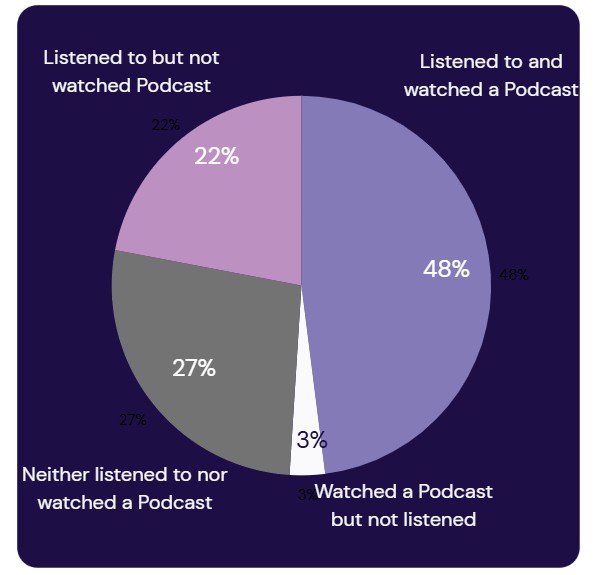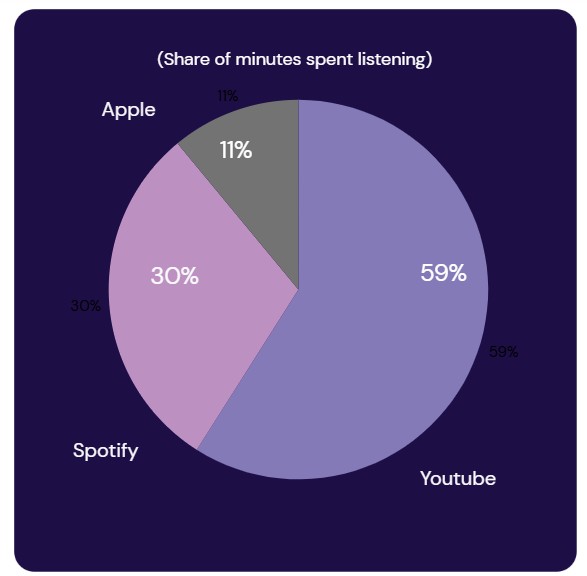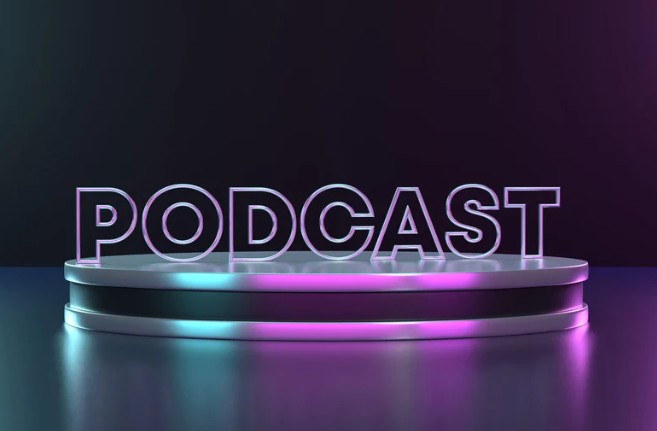Observing how audiences — especially younger ones — consume audio and video content, it’s clear that the distinction between Podcasts and Vodcasts is relevant only to industry insiders. The most recent studies from the U.S. market 1show that audiences simply don’t care.

Age breakdowns reveal a substantial balance between those who prefer audio-only and those who also consume Vodcasts — with a slight preference for the latter in the 25–34 age bracket, driven by hybrid consumption across platforms like YouTube and Smart TV.

YouTube, for instance, has doubled its market share among podcast listeners since 2019, effectively imposing a new hybrid language — the “Vodcast.” And yet, even on YouTube, user behavior remains multi-format: more than half of listeners consume the same content on other platforms as well, and 72% would switch platforms if their favorite podcast became available elsewhere. It’s not the platform that drives the behavior — it’s the content, and above all, the way it fits into people’s lives.

The growth of Spoken Content
Despite the ongoing debate among professionals over whether a video podcast deserves to be called a “podcast,” the reality is that listening audiences are growing at double-digit rates worldwide. And audio production is no longer limited to podcasts alone: audiobooks and spoken articles are increasingly part of the informational and entertainment landscape — not to mention the growing use of audio in digitized school materials.
Today, spoken content consumption is rising everywhere, and it goes far beyond podcasts. Audiobooks, spoken articles, and even synthesized voice applied to educational texts are part of a new digital audio ecosystem that blends information, entertainment, and accessibility. Production is expanding exponentially: according to Podcast Index there are 4.5 million shows globally; in 2021 BookBlinder estimated 74,000 audiobooks produced in a single year thanks to text-to-speech technology. Audioboost alone has exceeded 3 million spoken articles, growing by roughly 50,000 new items per month. And yet the real issue is not quantity — it’s being found and being heard.
The biggest challenge for podcasts and audiobooks is so-called “discoverability”: how audiences stumble upon new releases on platforms. For spoken articles, this issue disappears: their primary distribution channel is the websites that generate them, and users satisfy their listening intent immediately, on the spot.
Audio has entered every informational space — and with increasingly refined text-to-speech models, its production will continue to expand.
- The Advertising Landscape 2025 – April 2025 SoundProfitable ↩︎
